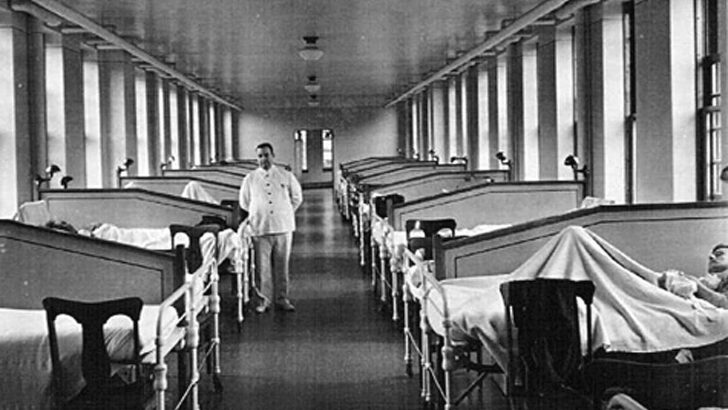Perhaps the one traditional trait that is left to some of us is that we know how to endure, writes Pól Ó Muirí
We have been here before. Writing in his diary in 1961, the poet Seán Ó Ríordáin notes: “An fliú sa chathair agus, de réir na dtuairiscí, ar fud na tíre.” Flu in the city and, according to reports, throughout the country. He writes that he is frightened, that two people from his office have caught it and that pain in the bones and a high temperature are symptoms. The last line is bleak: “Go sábhála Dia sinn, tá deireadh an domhain buailte linn” – God help us all, the end of the world is upon us.
If that line seems dramatic, it was because Ó Ríordáin (1916-1977) suffered from serious ill health throughout his life. He had contracted tuberculosis as a young man; a disease which his own doctors told him in later life that they did not think he would survive. Indeed, it is estimated in the year that Ó Ríordáin was born almost 10,000 people died of TB. It claimed many lives over many years and was a scourge to many generations of Irish people.
For someone of Ó Ríordáin’s generation the treatment involved being sent away to a sanatorium. Ó Ríordáin notes in his diary that the patient was sent to the sanatorium not to recover but to protect others in the community. (Can we call that, in these distressing days of Covid-19, ‘self-isolation’?)
Sanatorium
Ó Ríordáin’s biographer, Seán Ó Coileáin, writes in his biography of the poet, Seán Ó Ríordáin: Beatha agus Saothar (An Clóchomhar) that Ó Ríordáin entered the sanatorium for the first time on April 1, 1938. He was 21 years old. Ó Coileáin marks the date as the time that Ó Ríordáin was made into “a professional patient”. The young man did not live from that day forth but rather endured a kind of “living death” and never truly escaped from the effects of the disease. He was “baptised a leper from the first day he landed amongst his fellow patients”.
Ó Ríordáin recalls how visitors would decline to take a cigarette from a patient, such was their fear of contracting TB. The world outside, he wrote, was full of people who were healthy and hard whereas he and his company “melted away” in front of your eyes.
The dark shadow of the disease never left him and there are constant references to illness in extracts from his diary in Anamlón Bliana (Cló Iar-Chonnacht), edited brilliantly by Tadhg Ó Dúshláine. He writes of spitting up blood, of weak lungs, of depression and, perhaps most frighteningly: “Táim ag lorg m’análach” (I am searching for my breath).
That was in 1956 and even after all these years, you can feel the desperate struggle for air in those very, very simple words. Something as natural as breathing challenges him. Needless to say, those words are now being repeated throughout the world, in many different languages: “Táim ag lorg m’análach.”
Ó Coileáin notes that every year in the sanatorium was the same for Ó Ríordáin; that days and weeks melted into one another while time was counted and ground out.
We are all in the sanatorium now with Ó Ríordáin, it seems; we are all locked up in our own homes, watching the clock, grinding out the hours, waiting, hoping to avoid that disease which we cannot see. Whatever about sharing a cigarette, we are no longer allowed to drink a pint together.
Ó Ríordáin notes in one entry: “Sanatorium. Daoine ag paidreoireacht go gruama”(a sanatorium. People praying despondently). Sometimes, he writes, he becomes depressed and fearful; there is no joy in anything, no life. And yet, bit by bit, life breaks out.
An entry from June 1951 lifts the heart: “Is é seo an tráth den bhliain is ansa liom. This is my favourite time of the year. Sun, light. I have my white shirt on. One should always wear white shirts in the summer. The delightful smell of flowers is everywhere. The summer nights are wonderful. It is a fine thing to have an opportunity to say prayers.”
He wrote poetry of course, poetry that is read throughout Ireland, north and south. He is read by secondary and university students and his work has kept, and keeps, many an academic thinking and mediating. The big poems are well known and have big lines that fall out of distant memory:“Raghaidh mé síos i measc na ndaoine…I will go down amongst the people…”
Yes, we will all mix amongst one another again. There will be – Go sábhála Dia sinn – days of sun and light once more. The scent of flowers will fill the air again. And, yet, what has happened and what may yet happen, will change us forever.
The sanatorium is now part of our being. The false riches of the Celtic Tiger have been stripped away to nothing; the promise of immortality that is to be found in the next development or deal has been shown to be a lie: “An fliú sa chathair agus, de réir na dtuairiscí, ar fud na tíre.”
Ó Ríordáin remembers a patient from Limerick who had a great fondness for the fags failing to find a smoke. ‘Who cares,’ he says, ‘as long as we have our health’”
Still, we are Irish and perhaps the one traditional trait that is left to some of us is that we know how to endure. Cigarettes were much coveted in the sanatorium, this being the time that people did not realise that damage that cigarettes caused. Ó Ríordáin remembers a patient from Limerick who had a great fondness for the fags failing to find a smoke. “Who cares,” he says, “as long as we have our health.”
Who cares, indeed, as long as we have our health?



